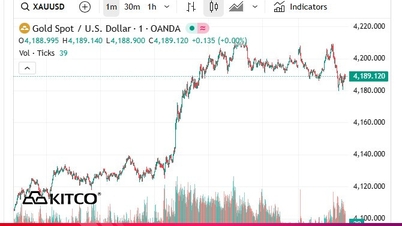From September 11, 2025, new regulations on public bond issuance in Vietnam will take effect.
Accordingly, there are some important changes: limiting the maximum Debt/Equity leverage ratio to 5 times, simplifying the approval process for credit institutions, and shortening the time to put bonds into trading on the secondary market after registration from 90 days to 30 days.
It is noteworthy that all public bond issuances, regardless of size, must have a credit rating, applicable to the issuer or to each bond. The exemptions are provided for credit institutions or bonds with full principal and interest payment guaranteed by credit institutions or international financial institutions.
VIS Rating said these changes are expected to be a driving force for improving market efficiency and discipline, laying the foundation for a more stable and sustainable bond market.
In the long term, issuers will have faster and more flexible access to capital, while investors will benefit from clearer risk information and more diverse investment products.
The new debt leverage limit is part of a set of financial safety criteria that issuers must meet, including ensuring capital safety, profitable operations and no overdue debt.
VIS Rating provides additional data based on 1,480 listed and registered businesses, of which about 75% have met the requirements on leverage limits and profitable operations.
The bond market will gradually shift its focus to businesses with healthier balance sheets and more stable cash flows.
This trend shows a clear change from the liquidity crisis in 2022-2023, when a series of highly leveraged and weak cash flow businesses fell into bond default. Simplifying management and administrative processes is expected to speed up bond issuance and increase market liquidity.
At the same time, the decision to require credit ratings for public bond issuances also marks a major turning point - many years after the Government first set this target in its roadmap for developing the corporate bond market in 2017.
However, the current coverage is very limited: 5 domestic credit rating organizations currently rate only 89 enterprises and 9 types of bonds, equivalent to 23% of the number of enterprises issuing and 0.4% of the total outstanding bonds. This gap shows the urgency and opportunity to apply credit ratings widely across the market.
If mandatory credit ratings for individual bonds were applied consistently and systematically to serve risk assessment and pricing, as developed bond markets in the region have done since the 1990s, credit ratings would contribute to improving market transparency and reliability.
As trust between issuers and investors is strengthened, the Vietnamese bond market can transform strongly, ready to welcome more complex financial structures and attract more foreign investors.
However, the new rules exempt certain groups of issuers and exempt bonds from leverage limits or credit rating requirements, or both. While these exemptions may spur issuance, they also pose a risk of maintaining uneven standards, allowing fundamental credit issues to continue to be overlooked.
Specifically, the fact that credit ratings are not required for credit institutions and guaranteed bonds, along with the fact that ratings are not required for bonds, should not be understood as meaning that these bonds and businesses are risk-free. Bonds of banks and consumer finance companies still have credit risks and need to be carefully evaluated, VIS Rating noted.
Therefore, bond investors must assess the health and structure of credit guarantees, as well as closely monitor the financial situation of the guarantor throughout the life of the bond. Currently, risk-based bond pricing remains a murky area, the analysis team said, as the Vietnamese bond market expands with more issuers and more complex instruments, the lack of a yield curve for corporate bonds is becoming a barrier.
Without a unified valuation standard, investors will have difficulty comparing and determining fair value, leading to increased risk and the risk of inappropriate asset allocation.
Therefore, building a solid pricing mechanism is no longer an option, but a fundamental condition to ensure market transparency and investor confidence.
Source: https://baodautu.vn/thi-truong-trai-phieu-doanh-nghiep-se-xoay-truc-sang-cac-doanh-nghiep-lanh-manh-hon-d413910.html





![[Photo] Cat Ba - Green island paradise](/_next/image?url=https%3A%2F%2Fvphoto.vietnam.vn%2Fthumb%2F1200x675%2Fvietnam%2Fresource%2FIMAGE%2F2025%2F12%2F04%2F1764821844074_ndo_br_1-dcbthienduongxanh638-jpg.webp&w=3840&q=75)






























![[Photo] 60th Anniversary of the Founding of the Vietnam Association of Photographic Artists](/_next/image?url=https%3A%2F%2Fvphoto.vietnam.vn%2Fthumb%2F1200x675%2Fvietnam%2Fresource%2FIMAGE%2F2025%2F12%2F05%2F1764935864512_a1-bnd-0841-9740-jpg.webp&w=3840&q=75)













































































Comment (0)